- Home
- Uganda
-
-
- Gorilla Trekking Safaris
- 15 Day Gorilla and Chimps Trekking – Big 5 and Nature Sighting Safari
- 10 Day Uganda Wildlife and Primate Safari
- 8 Day Gorillas – Chimps and Big Five Experience
- 7 Days Murchison Falls – Chimpanzee & Gorilla Trekking Safari
- 6 Day Gorilla Trekking and Queen Elizabeth
- 6 Day Gorillas and Lake Mburo Safari
- 5 Day Gorillas and White Water Rafting Safari
- 3 Day Uganda Fly to Bwindi Gorilla Safari
- 3 Days Gorilla Trekking and Batwa Trail experience in Bwindi
- 3 Day Gorillas and Lake Bunyonyi Safari
- Gorilla Trekking Safaris
-
- Wildlife Safaris
- 22 Days Best of Uganda Wilderness Adventure
- 18-Day Exploring Uganda Safari
- 15 Day Uganda – Kenya and Tanzania Safari Holiday
- 14 Day Uganda-Rwanda Wildlife & Primate Safari
- 14 Days Uganda & Kenya Wildlife Safari
- 12 Day Mountain Rwenzori Trekking and Wildlife
- 11 Day Uganda Safari Classic Tour
- 10 Day Best of Uganda Safari
- 7 Day Sipi Falls and Kidepo Valley National Park
- 4 Day Kibale Forest Chimpanzee Tracking
- 3 Day Murchison Falls Vacation Including Big 5 Sighting
- 3 Days Queen Elizabeth Wildlife Safari
- 2 Days White Water Rafting In Jinja
- Wildlife Safaris
-
- Birding & Fishing Tours
- 21 Days Birding Uganda and Gorilla Trekking Safari
- 18 Days Birding Tour with Gorilla Trekking
- 15 Days Uganda Birding Safari
- 10 Day Uganda Fishing Safari with a Boat Cruise Experience
- 10 Day Birding Uganda and Game Drives
- 4 Day Murchison Falls Fishing Safari
- 3 Day Mabamba Shoebill and Botanical Gardens Safari
- Birding & Fishing Tours
-
-
- Rwanda
-
- Kenya
-
- Tanzania
-
-
- Long Safaris
- 15 Day Uganda – Kenya and Tanzania Safari Holiday
- 14-Day Tanzania Wildlife Safari & Pangani Beach Holiday
- 10-Day Safari & Cultural Activity in Kilimanjaro Region
- 9-Day Kilimanjaro Hiking Safari in Tanzania
- 8-Day Honeymoon Package with Zanzibar Experience
- 8-Day Luxurious Tanzania Safari
- 8-Day Tanzania Safari & Beach Holiday
- 6 Day Explore Tanzania Classic Safari
- 6-Day Best of Tanzania Safari Tour
- Long Safaris
-
-
- National Parks
-
-
- Tanzania
- Serengeti National Park
- The Ngorongoro Conservation Area
- Lake Manyara National Park
- Tarangire National Park
- Mount Kilimanjaro National Park
- Arusha National Park
- Gombe National Park
- Ruaha National Park
- Katavi National Park
- Nyerere National Park (Selous)
- Mahale Mountains National Park
- Kitulo National Park
- Mikumi National Park
- Rubondo Island National Park
- Saadani National Park
- Mkomazi National Park
- Udzungwa Mountains National Park
- Tanzania
-
- Blog & Tips
- About Us
- Contact Us
Mgahinga National Park
Mgahinga National Park
Mgahinga National Park is a stunning and diverse protected area located in southwestern Uganda. It is part of the larger Virunga Mountains range, which extends across Uganda, Rwanda and the Democratic Republic of Congo. Established in 1991, Mgahinga is one of Uganda’s smallest national parks but holds immense ecological and cultural significance. Covering an area of approximately 33.7 square kilometers, it is a crucial part of the larger Virunga Conservation Area, which also includes nearby national parks in Rwanda and the Democratic Republic of Congo.
Mgahinga national park derives its name from Gahinga a local word that means piles of volcanic stones cleared from farmlands at the foot of volcanoes; A range of volcanoes that rises down near the Rwandan border is home to mountain gorillas and golden monkeys on its forested slopes; Few people come to see the view, but those who do be rewarded with a window into the very soul of a nation.
Three prominent forest covered extinct volcanic mountains stand out prominently and synonymous with the protected area; Gahinga, Sabinyo and Muhabura.
Mgahinga National Park Overview
The steep and rugged sides of mountains are covered in woodland rising to thick bamboo and afromontane zones at the tip of the mountains.; A combination of high altitude and thick forest vegetation cover leads to high rainfall amounts and very low temperatures that greatly support continuous plant growth through the year; These conditions are favourable for lots of mammals, birds and other species survival most notable the primates; Mountain gorillas which are highly endangered and a very rare Golden monkey species that is found nowhere else in East Africa apart from Virunga range.
Safaris to Mgahinga rotate about taking hikes into the mountains to trek Mountain gorillas, Golden monkeys, bird watching and a highly rewarding scenic viewing; Atop the Gahinga (3,474m) is a 180m diameter crater swamp with very beautiful vegetation while there is a 36m diameter crater lake on the summit of Muhabura (4,127m).
Another highly rewarding activity is the cultural walk into the indigenous peoples’ homesteads; the Batwa who are a short people former forest dwellers who were fruit and root tuber gatherers, hunters and fishing people. Their entire livelihood depended on the forests and had not business with life outside forests. Take a keen look into their livelihoods and discover the hidden secrets how they have lived sustainably with the wildlife their entire lifetime.
Key features of Mgahinga National Park.
Mgahinga is a fantastic general trekking location in addition to gorilla treks and golden monkey excursions, both for standard visits and the extended habituation adventures. All three of the mountains reachable from Uganda: Gahinga, Sabinyo, and Muhabura, provide strenuous guided day treks to their summits.
Biodiversity:
Despite its small size, Mgahinga is rich in biodiversity. The park’s varying elevations, ranging from around 2,227 meters to 4,127 meters above sea level, create distinct habitats for a wide variety of plant and animal species. The park is home to several endangered species, including the mountain gorillas, golden monkeys, and the rare Rwenzori duiker.
Mountain Gorillas:
One of the park’s main attractions is the endangered mountain gorilla (Gorilla beringei beringei). Several habituated Gorilla groups reside within the park, allowing visitors to partake in guided gorilla trekking experiences. This unique encounter with these gentle giants is a once-in-a-lifetime opportunity and contributes to both conservation efforts and local community development.
Golden Monkeys:
Besides mountain gorillas, Mgahinga National Park is also famous for its populations of golden monkeys (Cercopithecus mitis kandti). These colorful primates are endemic to the Albertine Rift and are a delight to observe in their natural habitat.
Volcanoes:
The park’s landscape is characterized by three extinct volcanoes—Mount Muhabura, Mount Gahinga, and Mount Sabinyo—which contribute to the region’s awe-inspiring scenery; Visitors can embark on challenging yet rewarding hikes to the summits of these volcanoes, offering panoramic views of the surrounding landscape.
Birdlife:
With over 115 bird species, Mgahinga National Park is a haven for birdwatchers. Some notable avian species found here include the Rwenzori turaco, crowned hornbill, and the white-starred robin.
Cultural Heritage:
The Batwa people, a marginalized indigenous community, have historical ties to the forested areas within the park. Visiting the park provides an opportunity to learn about their traditional ways of life, including their hunting and gathering techniques.
Conservation Efforts:
Mgahinga National Park is part of the greater Virunga Conservation Area, which aims to protect critical ecosystems and safeguard the unique flora and fauna of the region, including the mountain gorillas; Conservation initiatives in the park are closely linked to community development programs, promoting sustainable livelihoods and fostering a positive relationship between conservation and local communities.
Accessibility:
Mgahinga Gorilla National Park is accessible from the nearby towns of Kisoro and Kabale. The park can be reached by road from major Ugandan cities, such as Kampala, and is also accessible from Rwanda and the Democratic Republic of Congo for those traveling from neighboring countries.
Activities to do in Mgahinga National Park.
Gorilla Trekking.
The gorilla trekking process in Mgahinga is similar to that in Bwindi. Around nine in the morning, treks start. The distance you must travel to reach the gorilla family will determine how long the expedition will take. The hour-long encounter takes place at a distance of roughly 7 meters from the gorillas. You return to Park HQ through the forest when the hour has passed, typically arriving there by early afternoon.
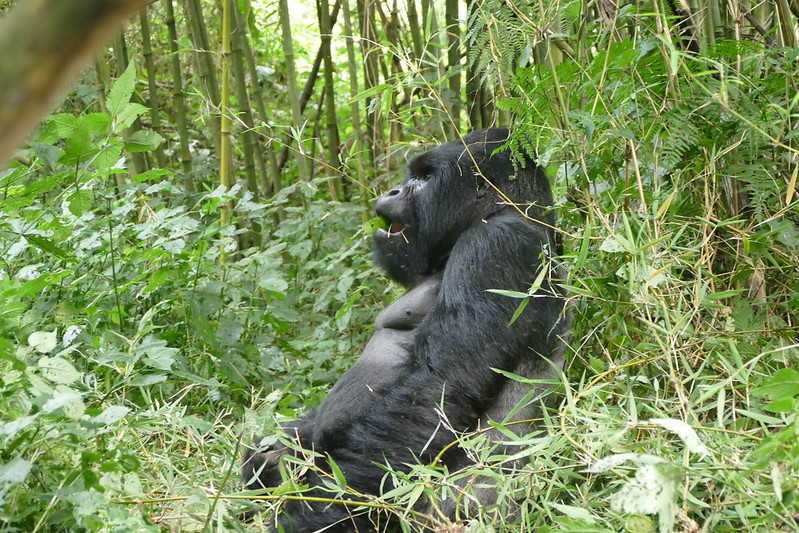
There is only one family that has been accustomed to making contact in Mgahinga, despite the fact that gorilla families frequently cross the border from Rwanda to Uganda. The group, known as the Nyakagazi group, consists of three baby gorillas, two adult females, and five silverbacks.
After being attacked by a lone silverback in 2004, the family spent the majority of their time on the Rwandan side of the border during that time; The Ugandan Wildlife Authority has promised to transfer the treks to Bwindi or refund the money if they move again after permits have been purchased. The treks to see the gorillas in Mgahinga can be difficult and demanding, just like in Bwindi. You must be emotionally and physically prepared, as well as appropriately dressed. If you get that right, you’ll have one of the most unforgettable animal encounters ever.
Batwa Trail Experience.
Before the area on which Mgahinga gorilla national park was set aside for the purpose of being a gorilla national park, the Batwa or African pygmies lived and thrived in these forests and mountains as hunter gatherers; They were later displaced but some of them still live around the park to participate in the tourism industry as porters and guides; They are also entitled to a portion of the tourism proceeds and a tip for their guide services will be welcome.
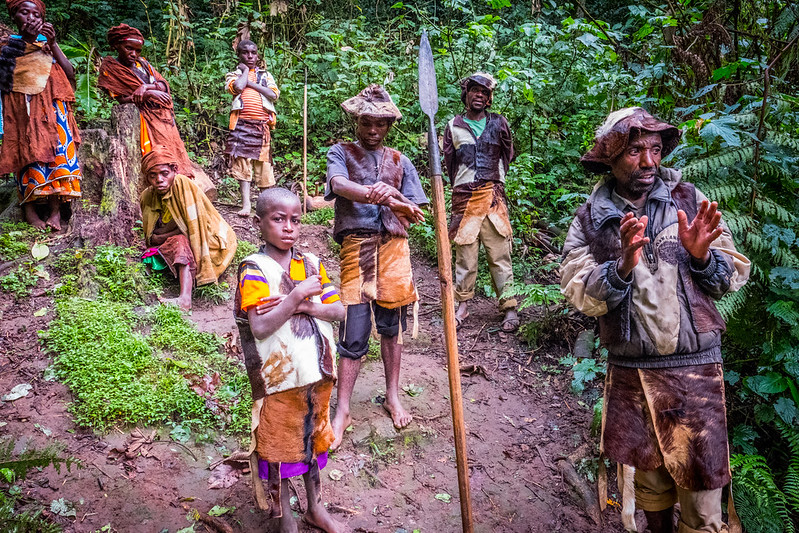
A Batwa trail experience is an activity that takes you through their history and transition over time. The Garama Cave, a very sacred piece of Batwa history is a good place to start. It is in this cave that they were able to hide from Bantu invasion many years back. The ease with which they bustle through the forest and glide uphill is awe striking and a reminder that east or west, home is best to the Batwa.
The Batwa Trail Day Walk Through: The walk is conducted by Batwa guides who provide insights into their traditional forest life and culture. The Batwa demonstrate their past hunting techniques; ways of gathering honey. The guides will point out the medicinal plants that were used and demonstrate how to make bamboo cups. Guests are finally invited to the sacred Ngarama Cave, once home to the Batwa King. The women of the community perform a cultural dance and you can participate in their dance.
Guided Hike.
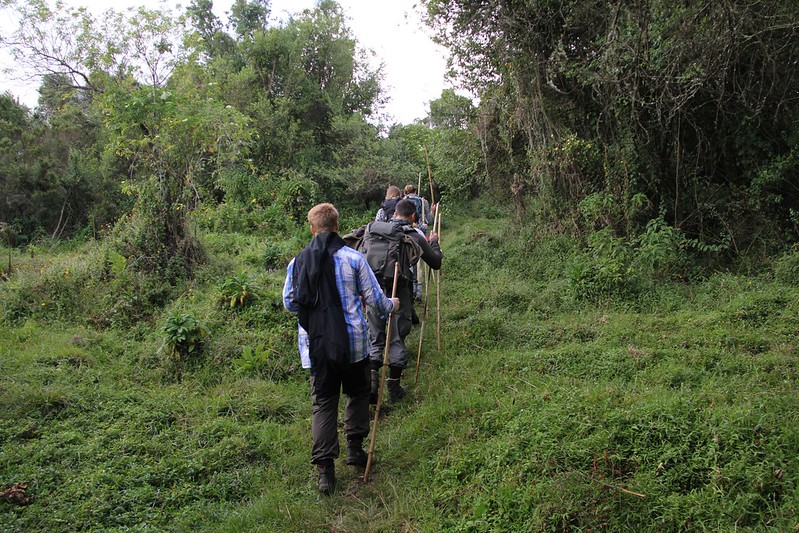
There are excellent guided walking trails that take you quite far up the mountains that are accessible for people staying in Mgahinga for longer than a few nights; Every day at around 7:30, the treks start, and depending on the participants’ fitness and interest, they can last anywhere from 7 to 9 hours. The 1,100-meter ascent from the park gate to Gahinga’s peak is the quickest path. It takes eight hours to complete the round trip 1,300-meter climb to reach Sabinyo’s peak. Climbers should be aware that the final ascent to the peak involves climbing a ladder up three successive rock faces. The Muhabura Peak’s 4,127m summit is the highest climb. After ascending 1,793m from the trailhead, hikers should watch out for signs of high altitude sickness; The journey requires grit and perseverance as you trudge across Afro-montane moorland, even though there are no rock cliffs to negotiate.
Golden Monkey Tracking and Habituation.
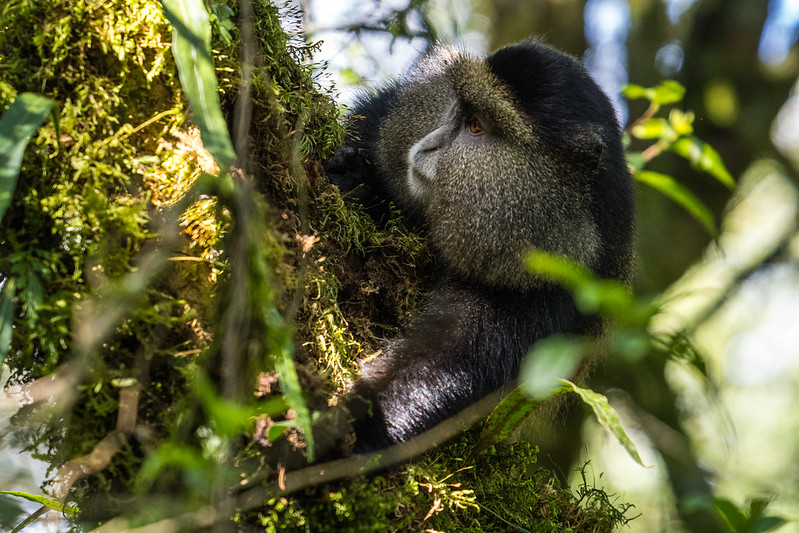
Large, curious, and cheeky old world monkeys known as “golden monkeys” can be seen in the bamboo zone of the Virunga Volcanoes. Their black limbs, crown, and tail-end contrast sharply with their bright orange-gold body, cheeks, and tail.
In search of food, the monkeys roam the bamboo forest. They don’t stop their foraging or fun activities because they are accustomed to seeing humans. The hike, which is strenuous but typically not as difficult as tracking gorillas, is found above 2,500 meters. Both the basic walk with an hour of interaction and the habituation trek, where you spend significantly more time on the mountain with the research team, are options
Getting to Mgahinga National Park
The village of Kisoro, which serves as the gateway to southern Bwindi, is located 14 kilometers from Mgahinga.
By Road
You can reach Mgahinga National Park by road from various locations in Uganda. Most travelers choose to drive from the capital, Kampala. The journey from Kampala to Kisoro takes about 8 to 10 hours, depending on road conditions and traffic. It’s essential to hire a reliable 4×4 vehicle as some roads might be rough and challenging
By Air:
The nearest international airport is Entebbe International Airport (EBB) in Uganda. From Entebbe, you can take a domestic flight to Kisoro Airstrip, which is the closest airport to Mgahinga National Park. Several domestic airlines operate flights between Entebbe and Kisoro, and the flight takes around 1 to 1.5 hours
Accommodation at Mgahinga National Park.
The opulent Mount Gahinga Lodge is the sole tourist lodge now operating in Mgahinga. The lodge, which is a stylish and cozy alternative close to the park gate, is a sister property of Volcanoes, Bwindi National parks and Kyambura Gorge.
Beautiful gardens attract wildlife to your door. When the park was gazetted, the indigenous Batwa people was forced out of the jungles, and the lodge has done amazing work helping them.
To help the Batwa integrate with the surrounding populations, they have erected a village, started a vocational training center, started a dancing troupe, and developed a cultural center; Further out, hotels like Clouds Mountain Gorilla Lodge, Buhoma Lodge, Chameleon Hill on Lake Mutanda, Sanctuary Gorilla Forest Camp, Volcanoes Bwindi Lodge and Bird’s Nest on Lake Bunyonyi provide access to Mgahinga.
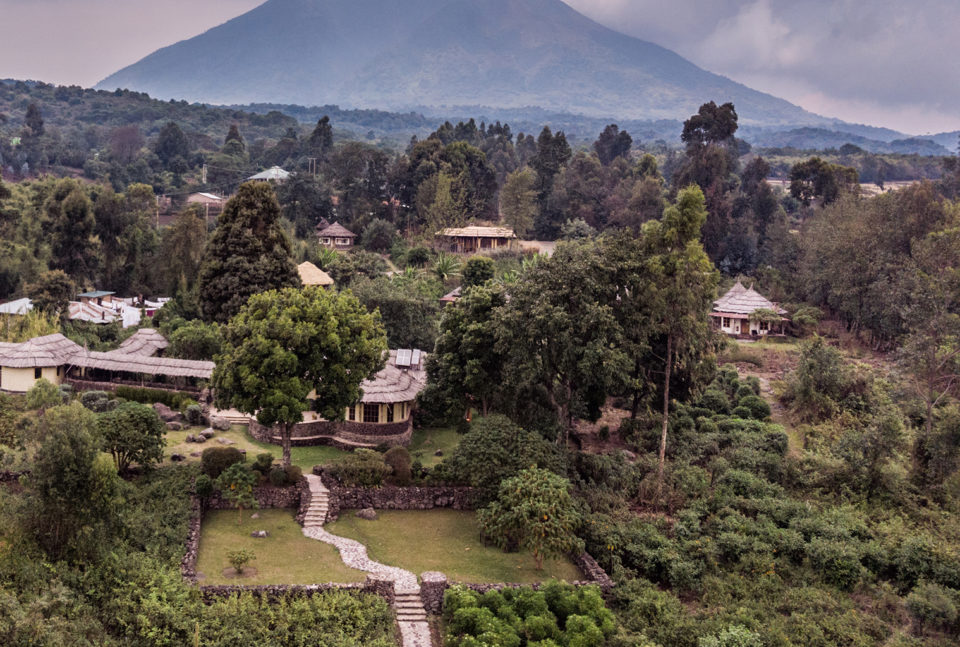
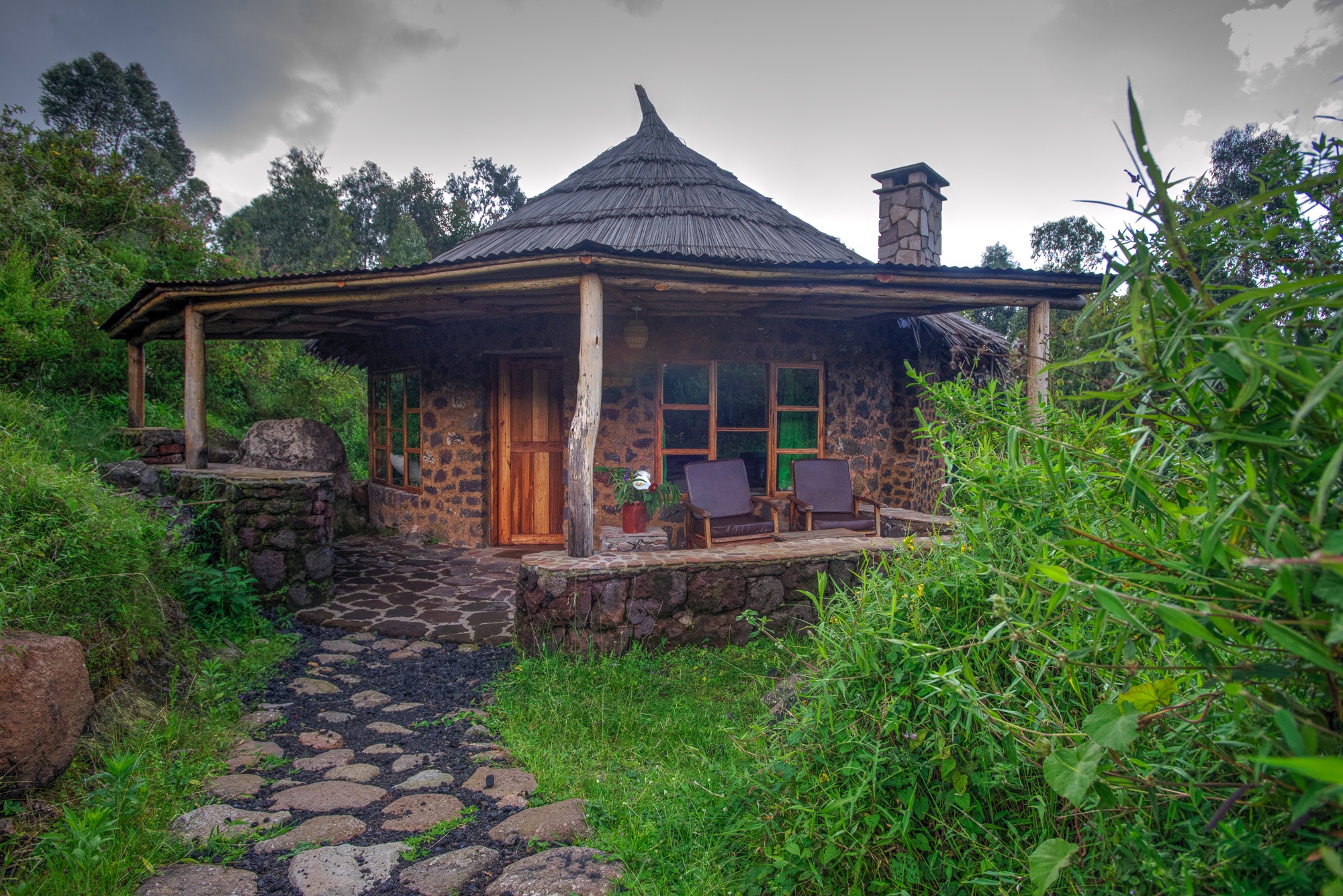
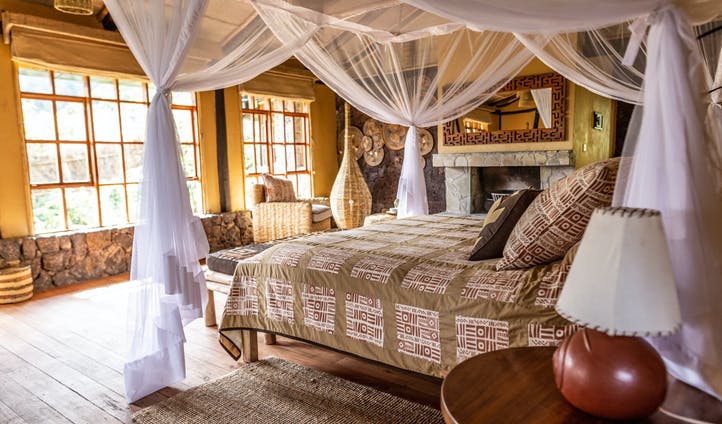

Gahinga Mountain Lodge Rooms Interior
When to Visit Mgahinga Gorilla National Park.
Mgahinga Gorilla National Park is located in southwestern Uganda and is known for its unique ecosystem, which includes rare mountain gorillas. The best time to visit the park depends on your preferences for weather, wildlife viewing, and trekking conditions. The park has a generally mild climate due to its elevation, but there are some considerations to keep in mind:
Dry Season (June to September, December to February):
- The dry season is considered the best time to visit the park. The weather is generally clear, and trekking conditions are more favorable.
- During this time, the trails are less muddy, making gorilla tracking and other hikes more manageable.
- Wildlife viewing is also better in the dry season as animals tend to congregate around water sources, making them easier to spot.
Wet Season (March to May, October to November):
- The wet season is characterized by heavier rainfall, which can result in more challenging trekking conditions due to muddy trails.
- However, this period also offers lush green landscapes and fewer crowds, making it a good choice for those who prefer a more serene experience.
- Keep in mind that some lodges and facilities might have limited operations during the wet season, so it’s important to check availability in advance.
Gorilla Permit Availability:
- Regardless of the season, securing a gorilla trekking permit is crucial as they are limited and in high demand. It’s recommended to book your permit well in advance, especially if you plan to visit during the dry season.
Bird Watching:
- If you’re interested in bird watching, the wet season is a fantastic time to visit. Many migratory bird species are present during this time, and the park becomes a paradise for bird enthusiasts.
Ultimately, the choice of when to visit Mgahinga Gorilla National Park depends on your preferences. If you prioritize favorable weather, ease of trekking, and better wildlife sightings, the dry season is your best bet. However, if you enjoy lush landscapes, fewer crowds, and the chance to see migratory birds, the wet season might be more appealing; Remember to plan ahead, especially when it comes to securing your gorilla trekking permit, as this is a critical aspect of your visit.
Conservation Measures and Challenges at Mgahinga NP
A lot of Wildlife related Conservation Measures and Challenges have been raised and these include
Challenges at Mgahinga National Park
Habitat Fragmentation: Mgahinga National Park is relatively small, and its ecosystem is vulnerable to fragmentation due to human activities like agriculture, logging, and infrastructure development. Fragmentation can disrupt wildlife movement and lead to isolated populations, reducing genetic diversity and increasing the risk of extinction.
Poaching and Illegal Wildlife Trade: Despite efforts to protect wildlife, poaching remains a significant concern. Mountain gorillas, in particular, are targeted by poachers for their body parts and infants, which are sometimes sold on the illegal wildlife trade market.
Human-Wildlife Conflict: The proximity of local communities to the park creates conflicts with wildlife. For example, elephants and buffaloes may damage crops, leading to retaliatory attacks by farmers. These conflicts can result in negative attitudes towards conservation and endanger both humans and animals.
Climate Change: Climate change can affect the delicate ecosystems within the park, disrupting animal habitats and vegetation. Shifts in temperature and rainfall patterns could alter the distribution of plant and animal species, impacting biodiversity.
Tourism Impact: While tourism can provide vital revenue for conservation efforts, it also puts pressure on the environment. The presence of tourists, especially around mountain gorilla groups, can disturb the animals and increase the risk of disease transmission between humans and gorillas.
Limited Resources: Like many protected areas in developing countries, Mgahinga National Park may face challenges in securing sufficient funding and resources for effective management and anti-poaching efforts.
Conservation Measures at Mgahinga National Park
Anti-Poaching Measures: Increased patrolling and surveillance are implemented to deter poachers and illegal activities within the park. Community engagement and awareness programs are conducted to reduce demand for illegal wildlife products.
Habitat Restoration: Efforts are made to restore and protect critical habitats within the park, ensuring the survival of endangered species and maintaining biodiversity.
Community Involvement: Engaging local communities in conservation initiatives can help foster a sense of ownership and responsibility towards the park’s protection. Community-based projects that provide alternative livelihoods, education, and healthcare can reduce human-wildlife conflicts.
Tourism Management: Implementing responsible and sustainable tourism practices, such as limiting the number of visitors to gorilla groups and enforcing guidelines for tourists, helps minimize the impact on wildlife.
International Collaboration: Collaborating with international organizations and neighboring countries helps address trans-boundary conservation issues and ensures a unified approach to protecting the Virunga Conservation Area. Appreciation to Uganda Wildlife Authority (UWA) for the continuous support towards conservation of Wildlife and Nature in Uganda.
Geography and Geology of Mgahinga Gorilla National Park.
Mgahinga Gorilla National Park is located in the southwestern corner of Uganda, bordering both Rwanda and the Democratic Republic of Congo (DRC); It is part of the larger Virunga Massif, a chain of eight volcanic mountains shared by these three countries; The park covers an area of about 33.7 square kilometers (13 square miles) and is known for its unique combination of mountain gorilla conservation and volcanic landscapes.
Geography:

The Park’s landscape is dominated by three conical extinct volcanoes:
- Mount Sabinyo (3,645 meters / 11,959 feet): This Mountain straddles the border of Uganda, Rwanda, and the DRC. It has several peaks and its name, Sabinyo, means “old man’s teeth” in the local language, which refers to its jagged summit.
- Mount Gahinga (3,474 meters / 11,398 feet): The name “Gahinga” means “pile of stones” in the local language, referencing the small piles of volcanic rocks found on its summit.
- Mount Muhabura (4,127 meters / 13,540 feet): The tallest of the three, Muhabura means “guide” in the local language, and it provides stunning panoramic views of the surrounding region.
Geology:
The Virunga Massif, including Mgahinga Gorilla National Park, is part of the East African Rift System, which is a tectonic plate boundary where the African Plate is splitting into two; The formation of the Virunga volcanoes is closely tied to this geological activity; The region’s volcanic history has shaped the unique terrain of the park, resulting in a mosaic of rugged mountain landscapes, deep valleys, and bamboo forests.
The volcanic soils of the area are quite fertile, which supports the diverse vegetation found in the park. These habitats range from bamboo forests to montane forests and alpine meadows as you ascend the slopes of the volcanoes. The park’s altitude and varying ecosystems contribute to its rich biodiversity, making it a critical habitat for the endangered mountain gorillas.
Overall, the geography and geology of Mgahinga Gorilla National Park contribute to its status as a remarkable conservation area with stunning landscapes and a unique combination of volcanic features and wildlife conservation efforts.
What to Pack for Mgahinga Gorilla National Park.
Packing for a trip to Mgahinga Gorilla National Park requires careful consideration due to the park’s elevation, varied weather conditions, and the activities you’ll be engaging in, such as gorilla trekking and other outdoor adventures. Here’s a comprehensive list of items to pack:
Clothing:
- Layered Clothing: Weather can vary greatly, so pack a mix of lightweight layers that you can easily put on or take off.
- Long-sleeved Shirts and Trousers: These help protect against sun, insects, and vegetation.
- Rain Jacket or Poncho: Essential for the occasional rain showers, especially during the wet season.
- Sturdy Hiking Boots: Comfortable and durable boots with good ankle support are essential for trekking.
- Hat or Cap: Provides protection against the sun.
- Gloves: Useful for gripping vegetation and protecting your hands during trekking.
Gorilla Trekking Gear:
- Gardening Gloves: Required for gorilla trekking to prevent any potential transmission of diseases between humans and gorillas.
- Gaiters: Useful for protecting your lower legs from wet vegetation and insects.
Outdoor Accessories:
- Sunglasses: Protect your eyes from the sun’s glare.
- Sunscreen: Apply sunscreen with high SPF to protect your skin from the sun’s rays, even on cloudy days.
- Insect Repellent: Essential to keep mosquitoes and other insects at bay.
- Small Daypack: Carry water, snacks, camera, and other essentials during hikes and treks.
- Water Bottle: Stay hydrated by carrying a refillable water bottle.
- Binoculars: Enhance your wildlife viewing experience by spotting distant animals and birds.
Personal Items:
- Medications: Pack any prescription medications you may need.
- First Aid Kit: Include basic first aid supplies like bandages, antiseptic, pain relievers, and any personal medications.
- Toiletries: Include items like a toothbrush, toothpaste, hand sanitizer, and personal hygiene products.
- Camera and Batteries: Capture the stunning scenery and wildlife, and don’t forget extra batteries or a power bank.
Miscellaneous:
- Travel Documents: Passport, visas, travel insurance, gorilla trekking permit, and any other necessary documents.
- Money: Have local currency (Ugandan shillings) and some US dollars for emergencies.
- Flashlight or Headlamp: Useful for navigating at night or in areas with limited lighting.
Remember that the weather can change quickly, so it’s important to be prepared for various conditions. Pack conservatively to avoid over packing and focus on functional, comfortable, and durable clothing and gear. Additionally, it’s a good idea to check with your accommodations or tour operators for any specific recommendations or requirements before your trip.
Remarks on Mgahinga Gorilla National Park.
When visiting Mgahinga National Park, it is essential to follow the park’s guidelines to ensure the safety and well-being of both visitors and the protected wildlife. Responsible and sustainable tourism practices play a crucial role in preserving the park’s natural wonders for future generation.

